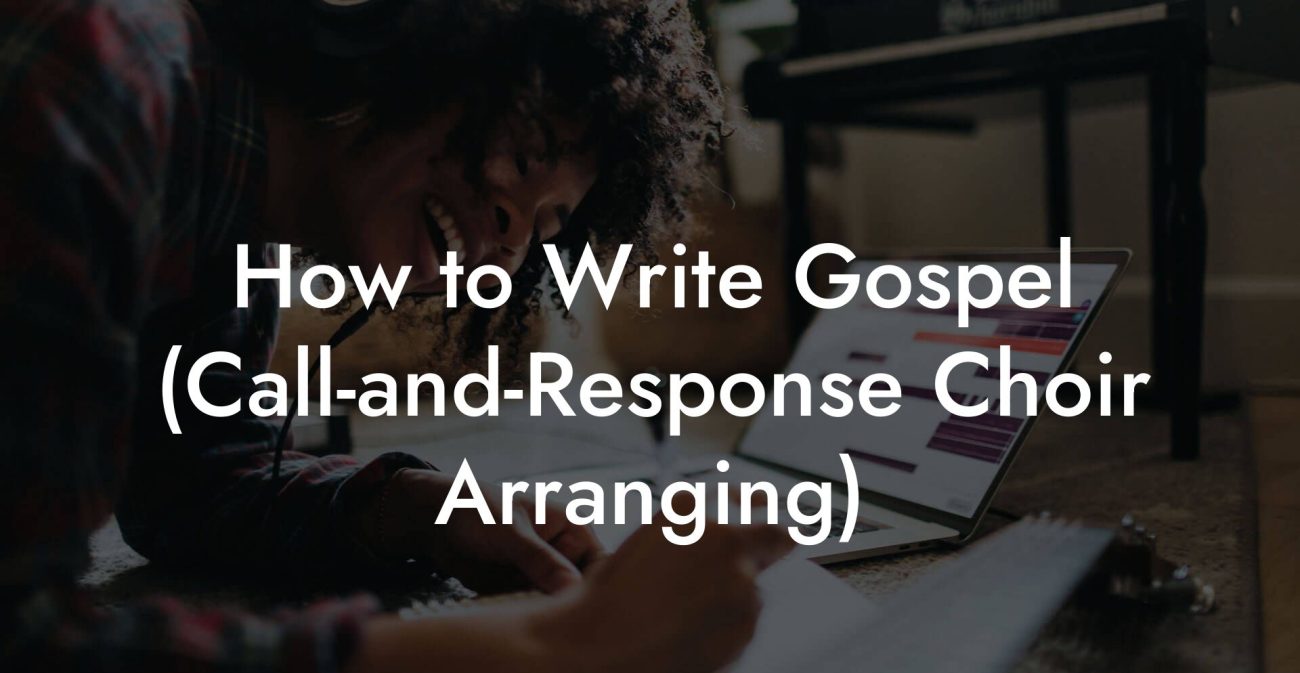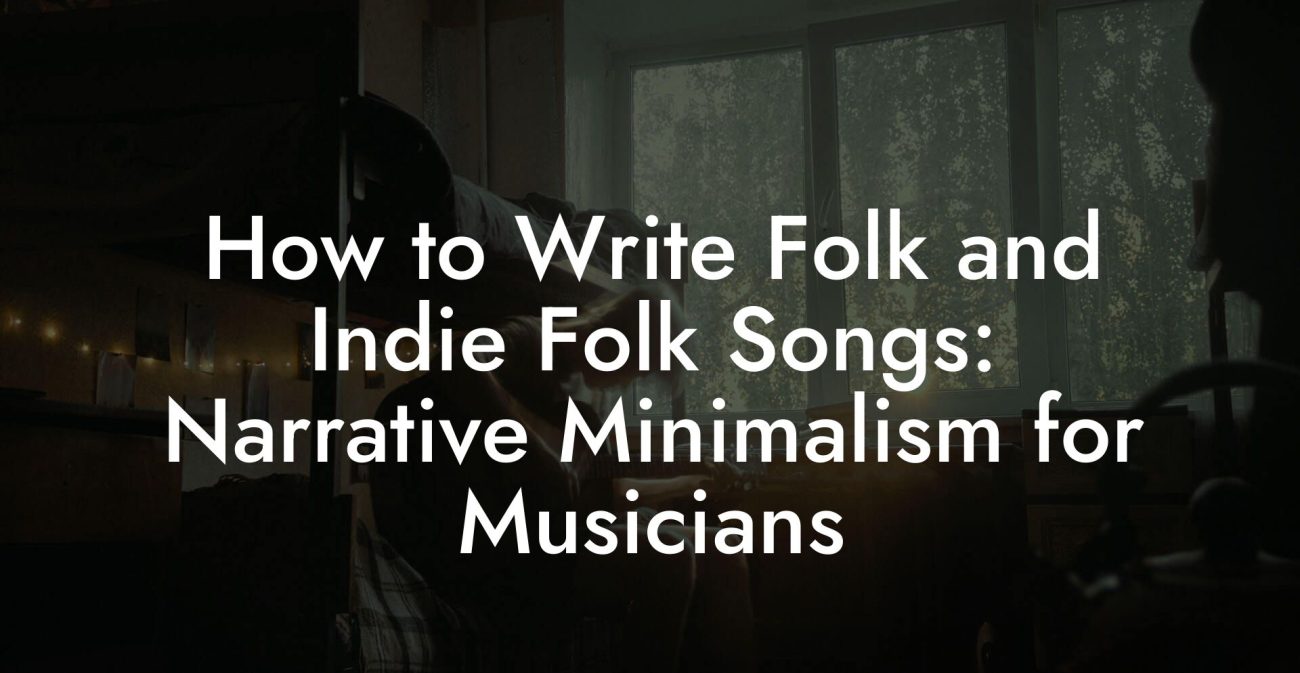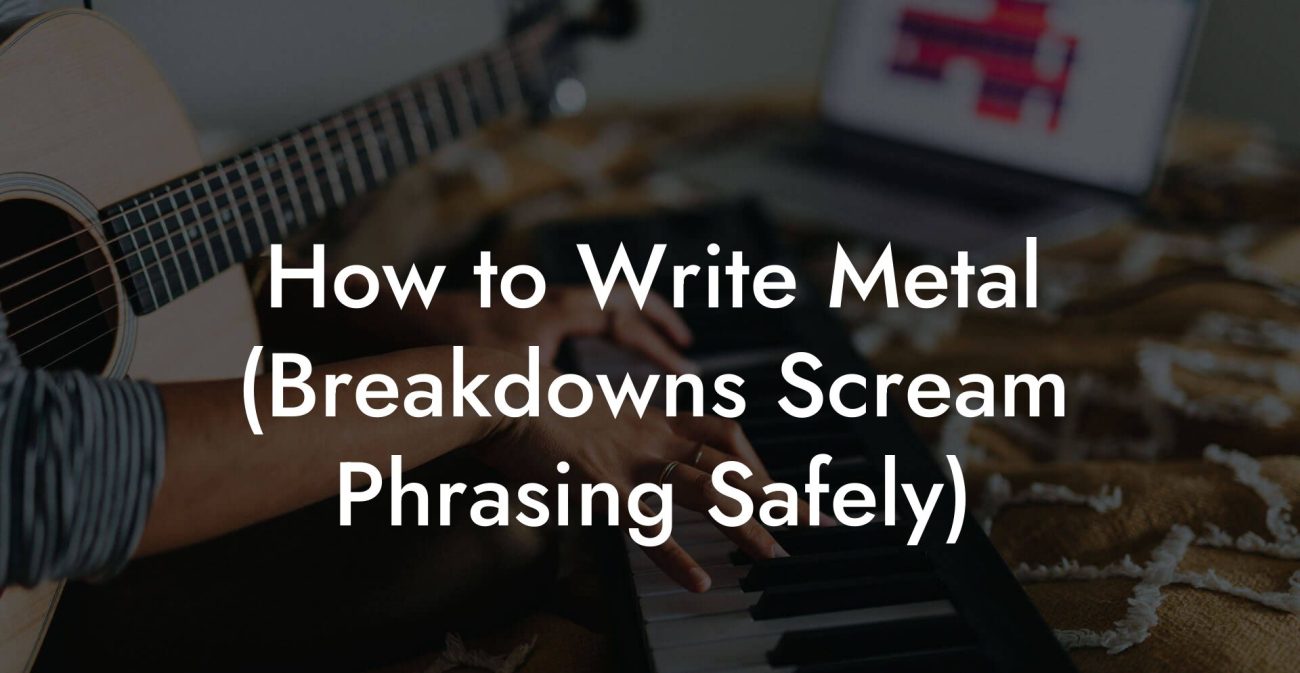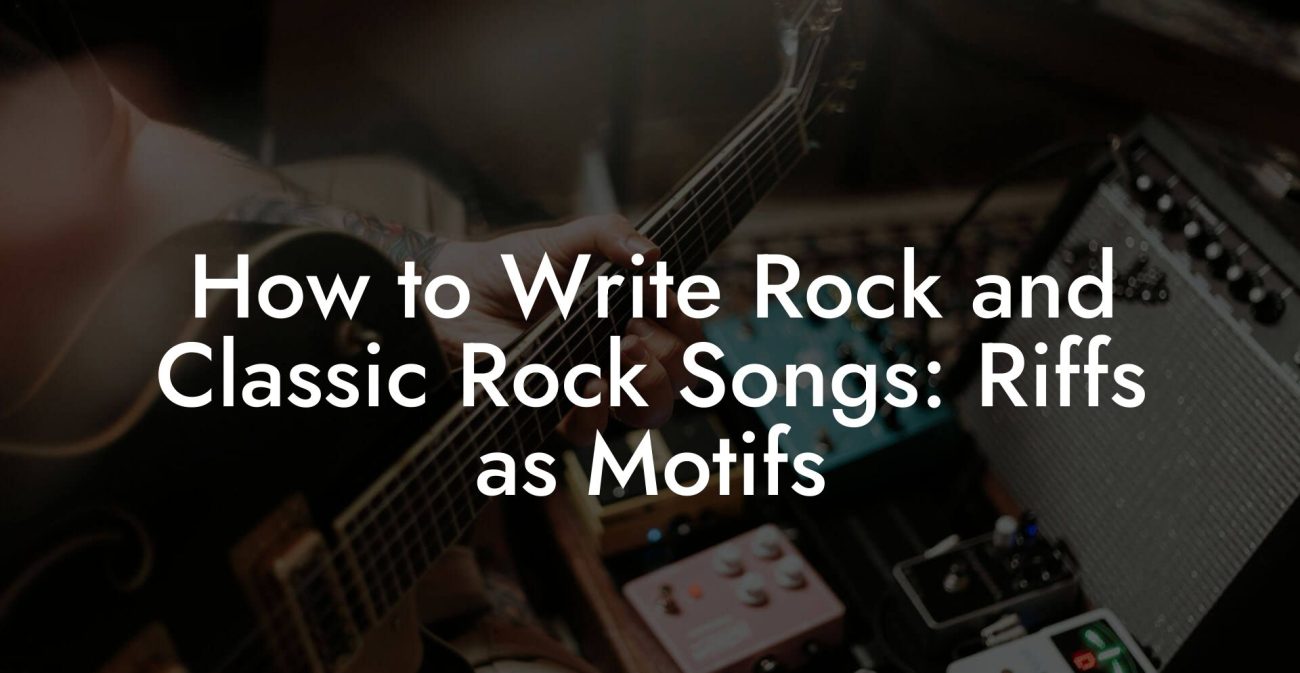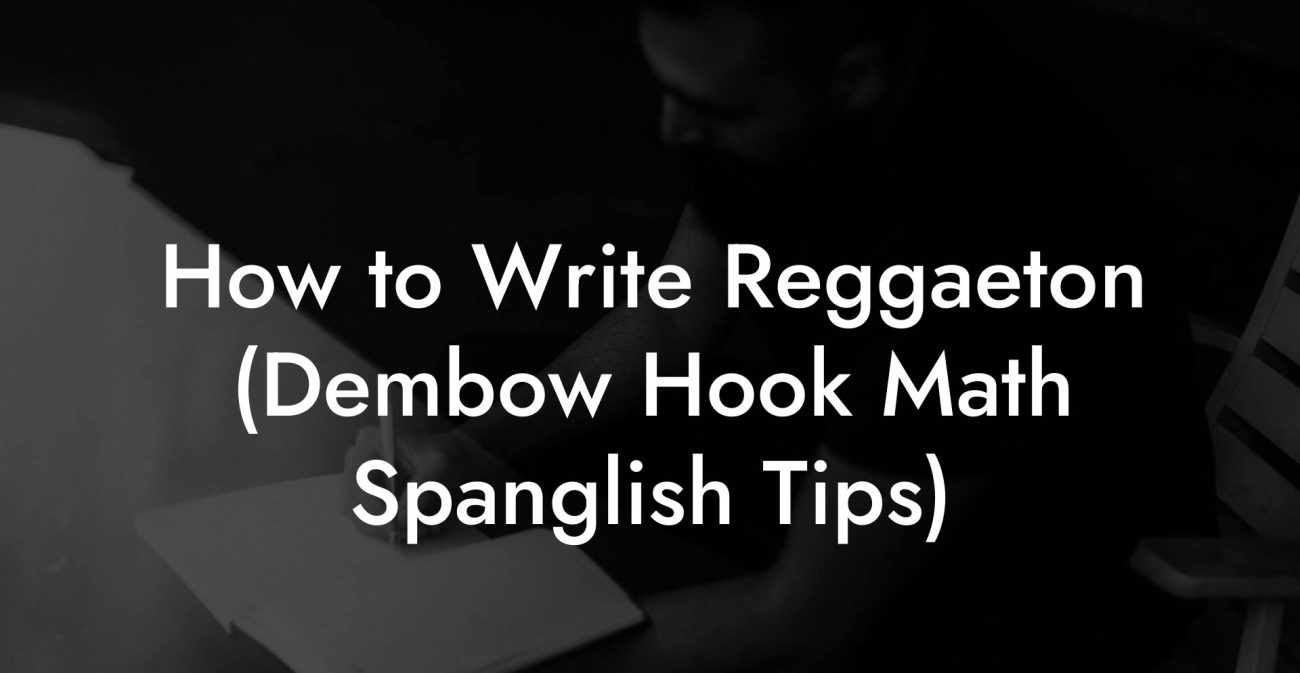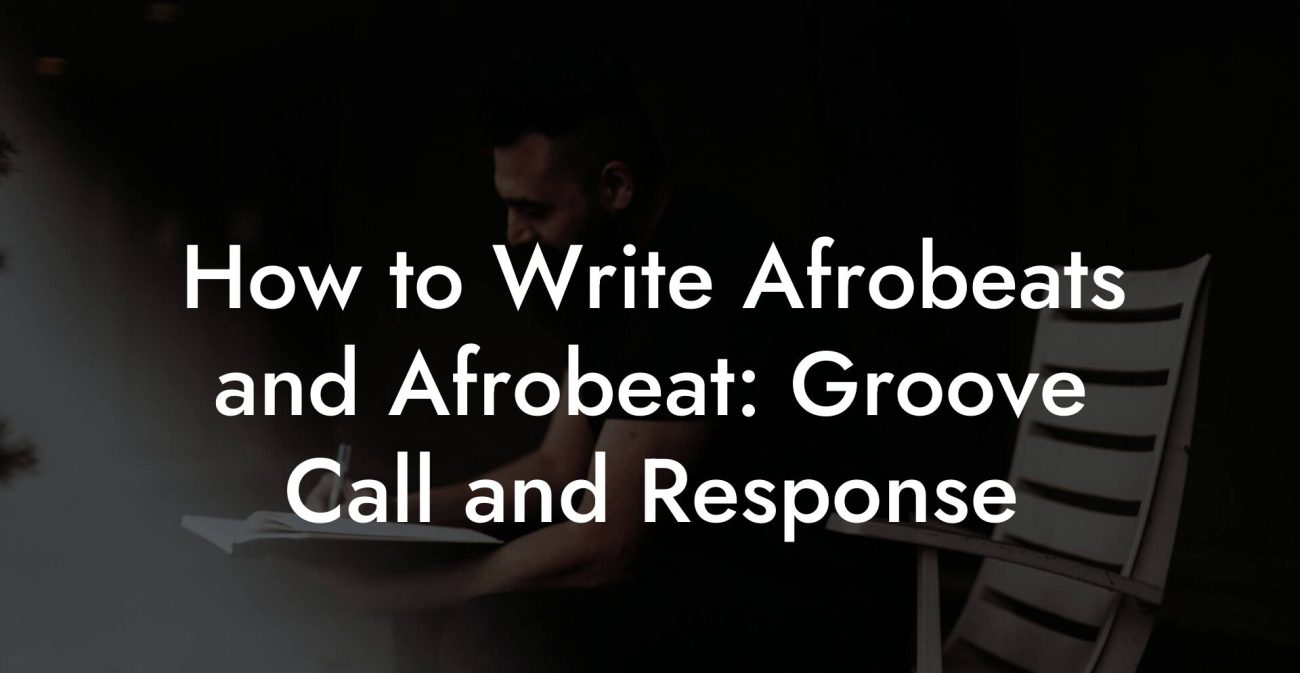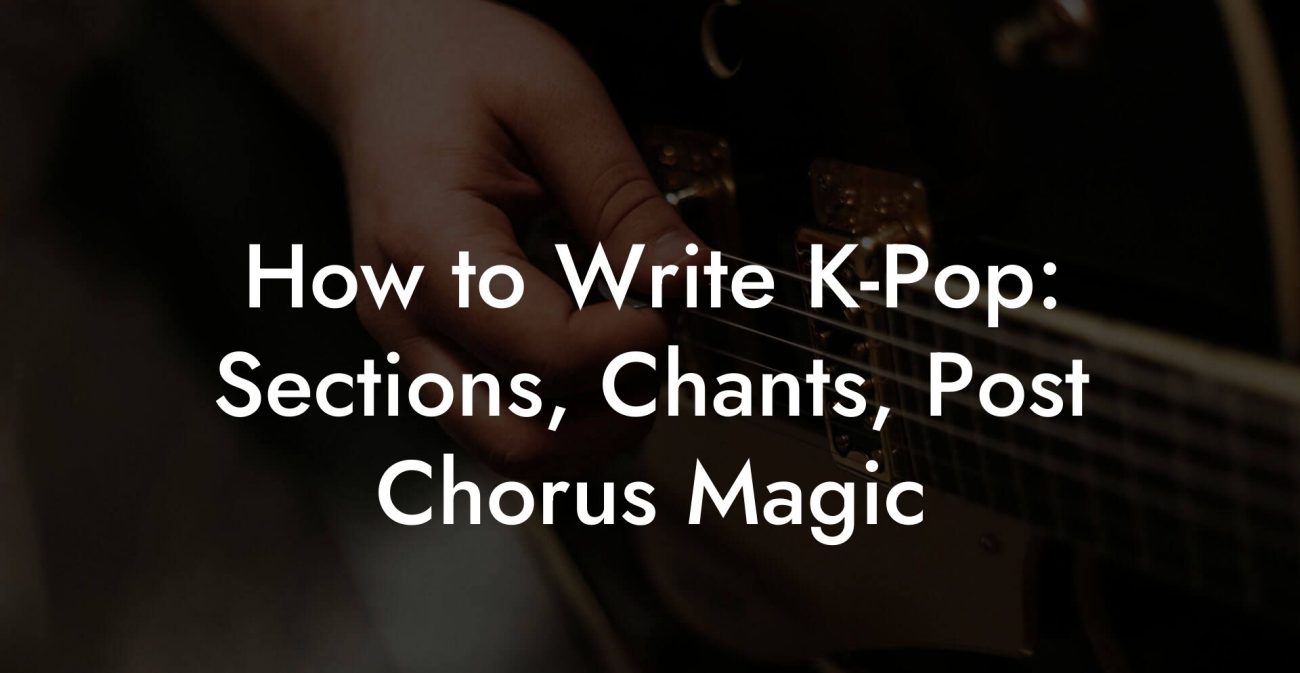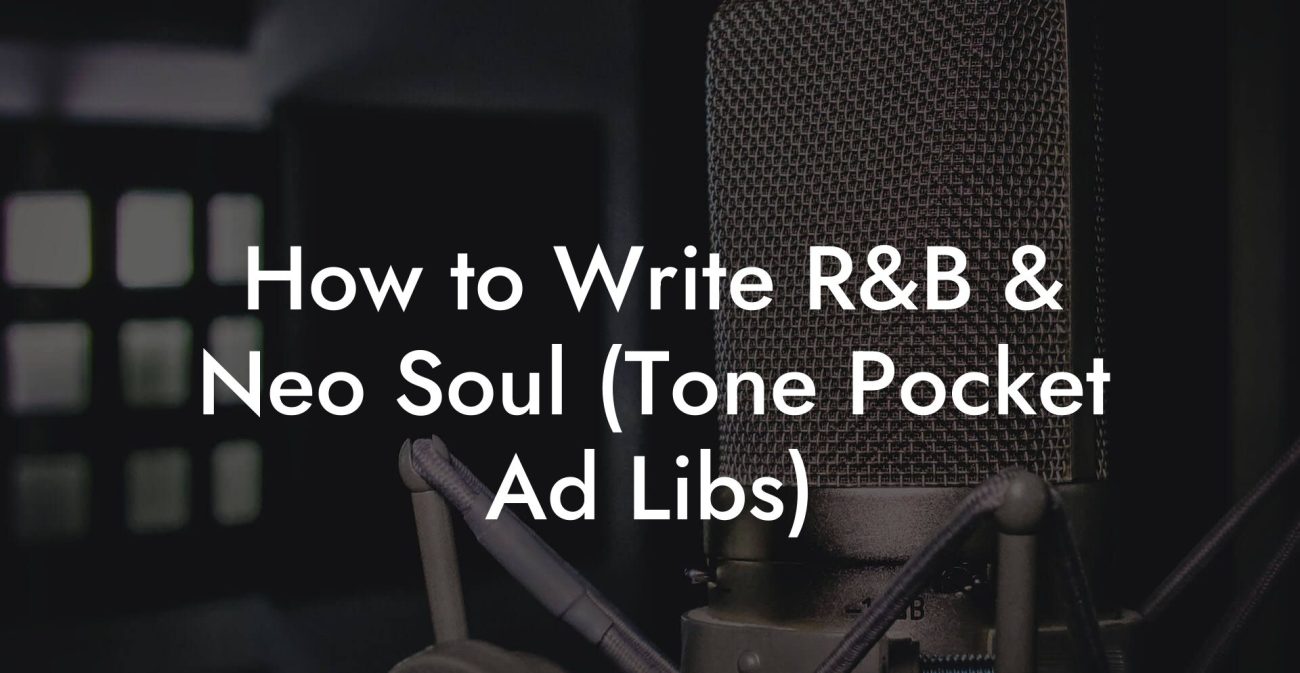Songwriting Advice
How to Write Hip Hop Rap: Bars, Flows, Rhyme Density Explained

You want bars that land like a mic drop. You want flows that make heads nod on the subway. You want rhyme schemes that sound clever without feeling like a thesaurus threw up. This guide gives you the tools you need to write rap that gets replayed, shared, and remembered.
Quick Interruption: Ever wondered how huge artists end up fighting for their own songs? The answer is in the fine print. Learn the lines that protect you. Own your masters. Keep royalties. Keep playing shows without moving back in with Mom. Find out more →
Quick Links to Useful Sections
- What Makes Rap Work
- Basic Terms That Do Not Suck
- Counting Bars Without Losing Your Mind
- Flow Basics
- On the one
- Off the one
- Staccato
- Legato
- Rhyme Density Explained
- Rhyme Types That Make Your Bars Pop
- End rhyme
- Internal rhyme
- Multisyllabic rhyme
- Assonance
- Consonance
- Slant rhyme
- Multisyllabic Writing Tricks
- Anchor the last syllable
- Syllable matching
- Swap consonants
- Use filler words intentionally
- Prosody and Stress Mapping
- Cadence and Breath Control
- Writing Workflows That Actually Finish Songs
- Beat first
- Topline first
- Lyric first
- Examples That Show the Change
- Common Writing Mistakes and How to Fix Them
- Advanced Techniques for Writers Who Want to Shine
- Polyrhythmic flows
- Asymmetrical bar lengths
- Callback phrasing
- Performance and Recording Tips
- Practice Drills That Actually Move the Needle
- One bar challenge
- Triplet run
- Prosody read
- Rhyme density test
- How to Collaborate Without Losing Your Voice
- How to Make Your Lyrics Relatable and Not Corny
- Monetization and Placement Thinking for Writers
- Songwriting Checklist Before You Move On
- Resources and Next Steps
- Frequently Asked Questions
Everything here is written for hungry beat makers, bedroom MCs, and anyone who wants to sound like they were born on the verse. We will cover the building blocks of rap writing including bar structure, flow patterns, rhyme density, multisyllabic rhymes, internal rhymes, cadence, breath placement, and performance tips. Expect jokes, blunt truth, and drills you can use today.
What Makes Rap Work
Rap is language moved by rhythm. The same sentence can be a street poem or a forgettable line depending on how the words ride the beat. These are the pillars to master.
- Bar clarity so every line feels intentional and fits the beat.
- Flow variety so your delivery surprises without confusing the listener.
- Rhyme density which is the amount of rhyme material you pack into each bar.
- Multisyllabic skill because stacked rhymes make verses sound smarter and tighter.
- Performance and breath control so the studio version kills it and the live version does not sound like a wheeze.
- Vivid detail so listeners can picture the scene and feel connected.
Basic Terms That Do Not Suck
If you are new to rap speak, here are the essentials explained and applied to real life.
- Bar. One measure of music with a set number of beats. In rap most bars contain four beats. A line that sits in one bar is usually called a line. Real life example. Think of a bar like a sentence in a short poem sitting inside a beat pocket.
- BPM. Beats per minute. A number that tells you how fast the beat is. Low tempo songs are calm. Fast BPMs want more syllables per second. Real life example. BPM is like walking speed. Slow BPM is a stroll. Fast BPM is running for the bus.
- Flow. The pattern of rhythm and rhyme you use over the beat. Flow is your signature. Real life example. Like texting rhythm. Some people send one long paragraph. Others send rapid short texts. That is flow.
- Hook. The catchy part people remember. Also called chorus. It is the elevator pitch of the song. Real life example. The hook is the memeable line your friend quotes at brunch.
- Ad libs. Short vocal tags and sounds that add flavor. Think of them as seasoning. Real life example. Ad libs are like throwing hot sauce on your beat.
- Multisyllabic rhymes. Rhymes that match on more than one syllable. They are the difference between amateur and pro sounding bars. Real life example. Like rhyming peanut butter with high street clutter.
- Internal rhyme. Rhymes inside the same bar not just at line ends. They make the verse bounce. Real life example. Internal rhyme is wearing patterned socks under a loud shoe. The detail matters when you pay attention.
Counting Bars Without Losing Your Mind
Most rap songs use standard bar counts like sixteen bars for a verse. That does not mean you must write the perfect sixteen bar novel. It means you have a framework where each bar can do something specific. Here is a practical map for a sixteen bar verse.
- Bars one to four set the scene. Use strong images not explanations.
- Bars five to eight build conflict or reveal a twist.
- Bars nine to twelve deepen the detail and raise stakes.
- Bars thirteen to sixteen deliver the payoff and the run up to the hook.
Real life scenario. Imagine telling your friend about a wild night. You do not start with the punchline. You give one or two tiny details, then the weird move, then the payoff where everyone claps. Verse structure does the same thing on a beat.
Flow Basics
Flow is a combo of rhythm, syllable placement, and timing. You can keep the exact words and change the flow for a completely different effect. Practice these flow shapes.
On the one
Place the strongest words on the first beat of the bar. This is classic. It sounds confident. Real life example. Like walking into a room and saying the sentence like it is the only sentence that matters.
Off the one
Delay the strong word slightly into the bar. That little lag creates tension. Real life example. Like pausing for dramatic effect before you drop the joke.
Staccato
Short clipped syllables that push like machine gun. Works on high BPMs. Real life example. Like rapid texts with no punctuation telling someone where you are.
Legato
Long connected syllables that draw a line over the beat. Great for hooks and slower tempos. Real life example. Like saying a sentence while taking a sip of coffee in the middle.
Rhyme Density Explained
Rhyme density measures how much rhyme you pack into a bar. It is not an official scientific value but it is a useful way to think about tightness. A low density bar rhymes once at the end. A high density bar has multiple rhymes internal and end rhymes across syllables.
Here is a simple way to measure rhyme density for practice. Count the number of rhyme points you hear in each bar. A rhyme point is an audible matching sound whether it uses the same vowel or consonant pattern.
- One rhyme point per bar is sparse. It can work for emphasis and clarity.
- Three to five rhyme points per bar is dense and pleasurable when executed cleanly.
- More than five rhyme points per bar is extreme. Use it in small doses unless you are trying to win a rap battle.
Real life example. If you are telling a story at a party you will not cram five clever punchlines into one sentence unless you are competing for attention. Verse writing follows social rules. Use density to control energy.
Rhyme Types That Make Your Bars Pop
End rhyme
Rhyme at the end of lines. The classic. If you only use end rhyme you might sound neat but safe.
Internal rhyme
Rhyme inside the same bar. It creates bounce and helps the listener anticipate the ear candy.
Multisyllabic rhyme
Rhymes across multiple syllables. They are the highest return on craft. Multis make the verse sound complex and skilled without being incomprehensible. Example. Instead of rhyming cat with hat you rhyme catastrophe with strategy. It sounds smarter but still musical.
Assonance
Vowel matching. Helps lines feel connected even if consonants differ. Real life example. Like humming to yourself with similar vowel sounds across words.
Consonance
Consonant repetition. It creates texture and can be used to tie hard consonants together for punch.
Slant rhyme
Close enough rhymes like heart with hard. Slant rhyme keeps language flexible and avoids forced lines.
Multisyllabic Writing Tricks
Multisyllabic rhymes are a major differentiator. They take practice. Try these four exercises.
Anchor the last syllable
Pick a long multisyllable word you want as the rhyme anchor for the bar. Build the internal rhyme to lead into that anchor. Example. Anchor word publicity. Preceding words could be double the ruthlessness of this publicity.
Syllable matching
Count syllables loud. Rap them on vowels. Match the vowel pattern and the consonant endings if possible. If you can rap the rhyme with the same breath it probably fits.
Swap consonants
If the vowel pattern is strong you can change consonants and still get a multisyllabic effect. Example. Generational with sensational. They feel alike because the vowel shape matches.
Use filler words intentionally
Small words like the and a can be used to create rhythm and give your ear time to lock on to the next rhyme cluster. Do not waste them. Use them like rests in a drum loop.
Prosody and Stress Mapping
Prosody sounds like a fancy word but it just means the natural stress of spoken language. Rap needs prosody to feel true. If you push a weak syllable onto the beat it will sound off even if the rhyme is brilliant. Fix it by reading lines out loud and marking the natural stress.
Practical method. Say the bar in conversation speed. Circle the stressed syllables. Align those circles with strong beats in the measure. If a strong word falls on a weak beat either change the word or change the flow so the stress sits on the strong beat.
Real life example. Imagine telling someone about a ex. You would naturally stress the name not the word that. The same placement works in a verse. If you put the name on a tiny offbeat the listener will not feel the impact.
Cadence and Breath Control
Cadence is how you breathe and phrase lines. You can write a bar that has ten syllables that roll out like a drum fill. If you do not plan your breaths the studio take will sound ragged.
- Map breaths during writing. Use slashes or parentheses where you will inhale.
- Practice long runs at slow tempo first. Build up to the final BPM.
- Use partial breaths. Not every breath needs to be full. A small inhale can supply oxygen for a short cluster of words.
- Hydrate and practice lip trills. They help with breath management and vocal tension.
Writing Workflows That Actually Finish Songs
Here are three realistic workflows depending on how you start. Pick one and use it for an entire month to build muscle memory.
Beat first
- Listen to the beat on repeat for two minutes without writing. Find the pocket.
- Mark where the drums breathe and where they hit hard. Decide where the hook will land.
- Vocalize nonsense flows on vowels. Record a few takes. Pick the best rhythmic gestures.
- Write bars into those gestures. Start with the end rhyme. Build backward.
Topline first
- Create a melodic chant or hook with no beat. Find a phrase that sticks.
- Search for beats that complement the hook. A hook that swings on triplets needs a beat that supports triplets.
- Fit verses into the groove of the hook. Keep the hook spacious enough to breathe.
Lyric first
- Write a scene in plain language with details and a core emotional line.
- Convert paragraphs into bars by cutting and rhythmizing them into line length that fits the bar count.
- Check prosody and align stresses with beats when a beat appears.
Examples That Show the Change
We will transform weak drafts into tight bars. These before after pairs are surgical.
Topic: Walking away after being played.
Before: I am done with your games. You lied and now I am gone.
After: You played chess with my trust, now I check out. Pieces on your floor, I do not check for more.
Why it works. The after uses image, internal rhyme, and a run up to the end rhyme. You can feel the motion. The listener can picture the pieces on the floor.
Topic: Flexing success.
Before: I got money now. I work hard and I made it.
After: Wallet bulges like a phone that never fits, pockets laugh when I walk and carry all the hits.
Why it works. The after uses a simile and internal rhyme. It is vivid and playful.
Common Writing Mistakes and How to Fix Them
- Too many ideas. Keep each verse focused on one clear scene or emotion. If you have three topics split them into different verses.
- Rhyme at all cost. Avoid forcing words to rhyme. Clarity beats a clever forced rhyme. If a line sounds weird when spoken do not use it.
- Flat flow. Vary rhythms across bars. If every bar lands the same way the song feels monotonous.
- Overuse of ad libs. Ad libs are seasoning not the main course. Use them to lift hooks or lines not to hide weak content.
- Poor breath placement. Mark your breath points and practice them on the beat until they are muscle memory.
Advanced Techniques for Writers Who Want to Shine
Polyrhythmic flows
Riding two rhythmic feels at once can sound futuristic. Think of singing a triplet pattern over a straight four count. Start simple by rapping triplets over a slow beat. Keep the words clear.
Asymmetrical bar lengths
Sometimes a nine syllable bar that bleeds into the next bar sounds interesting. This is risky. Use it when you want to create urgency. Always make sure you resolve the phrase so listeners do not feel lost.
Callback phrasing
Repeat a small phrase across the verse with different endings. It creates cohesion. Example. Start four bars with the same two word tag and change the last words to escalate the story.
Performance and Recording Tips
- Warm up your voice and lips before recording. Do simple scales and lip rolls.
- Record multiple passes. One for straight delivery, one for attitude, one for doubles if you need them.
- Use a pop filter and sit at a fixed distance to keep levels consistent. Move closer for whisper lines and farther for aggressive lines.
- Comp your best lines. You do not need a perfect single take. Pull the best bars and create a composite that feels live.
- Do not be afraid to rewrite in the booth. Sometimes a different word in context will unlock a better bar.
Practice Drills That Actually Move the Needle
One bar challenge
Pick a beat and write one bar that contains at least three rhyme points and one internal rhyme. Record it. Improve it until the whole bar feels tight. Repeat daily.
Triplet run
Find a slow beat and rap eight bars using triplets. Focus on clear diction and breath control. Speed up gradually.
Prosody read
Take five bars from your favorite rapper. Speak them in conversation speed and mark stress points. Rap them aligned to a metronome. Notice how they push stress onto beats and borrow rhythm from speech.
Rhyme density test
Write a verse of sixteen bars. Count rhyme points in each bar. Your goal is to end the week with the average points per bar increasing without losing clarity.
How to Collaborate Without Losing Your Voice
Working with a producer or a co writer is a skill. Bring a clear idea. Even a one sentence emotional promise helps. If you show up with ten loosely related lines you will fight about taste forever.
- Bring a mood board. Two reference tracks and a short note about vibe will speed everything up.
- If you are trading verses keep one hook that you own. It keeps the song coherent.
- Be ready to trade a line for a stronger one. If someone suggests a better word consider it. Ego will not write the next hit.
How to Make Your Lyrics Relatable and Not Corny
Relatability comes from specific details not from obvious statements. Saying I am sad is boring. Showing a small detail that implies sadness invites empathy. Use concrete imagery and tiny moments.
Real life example. Instead of I miss you write The mug you left is still warm and I pick it up like a bad habit. That paints a picture without spelling out the emotion.
Monetization and Placement Thinking for Writers
If you want your songs to be sync friendly think about hooks that can be used in short clips. Short loops and repeatable phrases are better for social clips. A strong one line hook that can be repeated over a chorus is social gold.
Real life example. A hook that is a single memorable phrase will get used in videos and challenges. Think about how a fifteen second clip sounds when you write the hook.
Songwriting Checklist Before You Move On
- Does the hook land within the first chorus?
- Are the stress points aligned to the beats?
- Does the verse tell one scene with at least two vivid details?
- Is the rhyme density intentional and clear?
- Do you have mapped breath points?
- Can you rap the whole verse at the final tempo without gasping?
Resources and Next Steps
Keep a running file of your favorite bars. Transcribe verses you admire. Not to steal but to study the mechanics. Notice where the multis fall and how the internal rhymes are stacked. Try to replicate the patterns with your own content.
Join a local cipher or an online writing group. Nothing teaches putting a bar on the clock like a weekly deadline and an audience to roast your drafts lovingly.
Frequently Asked Questions
What is a bar in rap
A bar is a single measure in music commonly containing four beats. In rap a bar usually equals one line of lyrics that fits into those four beats. When people say sixteen bars they mean sixteen measures or roughly one verse. Think of a bar like a sentence that lives inside a musical pocket.
How do I improve my flow
Practice on a metronome. Vary where you place stress. Try triplets and straight eighths. Record a lot of nonsense vocal runs and pick the ones that feel musical. Study flows from rappers you like and map them on paper to see patterns.
What is rhyme density and does it matter
Rhyme density is how much rhyme material you put in each bar. It matters because denser bars often sound more skilled and give the ear more to enjoy. Too much density can be confusing. Use density to control energy and to highlight important moments.
How do I write multisyllabic rhymes
Match vowel shapes and consonant endings across multiple syllables. Count syllables and practice saying them out loud. Use anchor words and build internal rhyme clusters that lead into the anchor. Practice with simple words and scale complexity gradually.
How many bars is a verse
The standard is sixteen bars but verses can be shorter or longer depending on the song. Sixteen bars is a great target for practice. When writing think about narrative arcs within those bars to keep listeners engaged.
How do I write a hook that sticks
Make it simple, repeatable, and emotional. Use a short phrase that can be sung or chanted. Leave space for ad libs. Hooks that double as a social clip line will often perform better on streaming platforms and social media.
What BPM should I use for rap
There is no single BPM. Classic boom bap sits around seventy to ninety BPM which often feels like one hundred forty to one hundred eighty in double time. Trap ranges from sixty to seventy BPM with hi hats in rapid subdivisions. Choose the BPM that matches the mood and the syllable density you want to pack in.
How do I not sound corny with brag lines
Use specific imagery and avoid tired metaphors. Show how success looks in small details. Instead of I am rich say My coffee cup is a paperweight bedroom lamp bills on the floor folded like an offer. Specifics beat general boasting.




